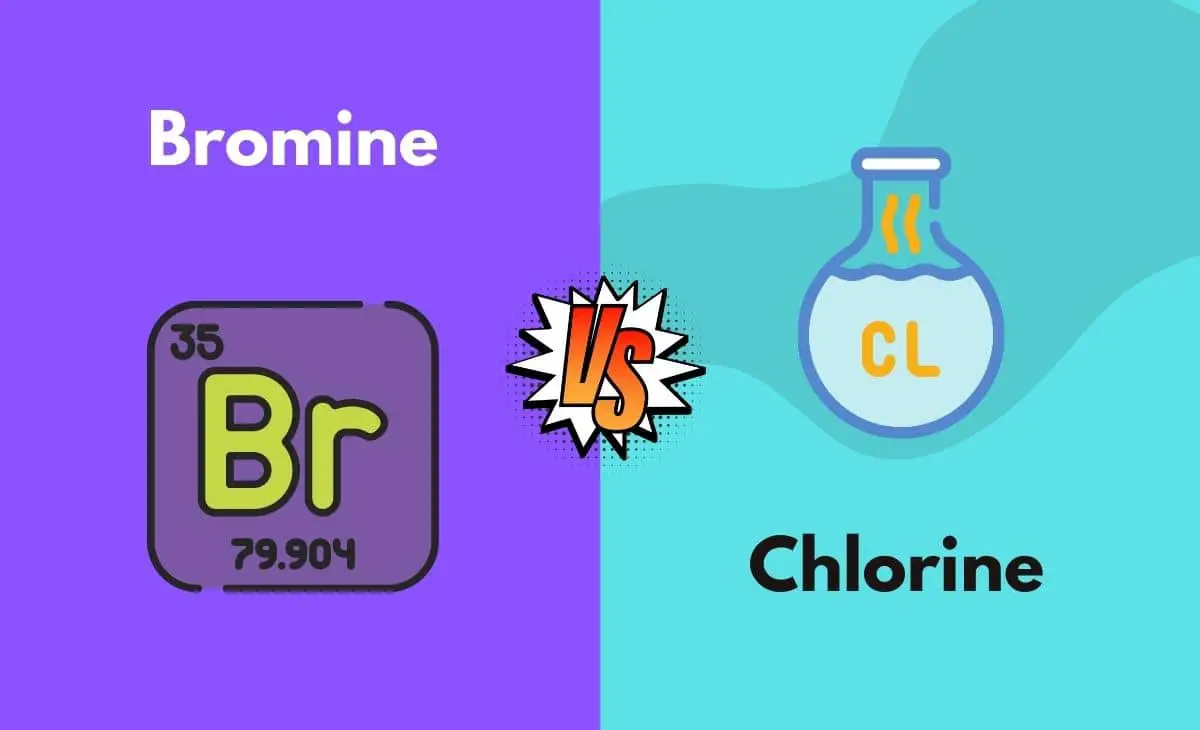Using Chlorine for backyard swimming pools has been used for disinfection for years but the question of its safety has helped produce different sanitizing products that do the same thing like Bromine which is one of the alternative sanitizers used to switch from Chlorine. How do you Switch From Chlorine to Bromine sanitizer?
To switch from chlorine to bromine:
- Stop using chlorine
- Empty pool to ¾ min. level
- Clean filtration system by backwashing
- Make sure there is no more Chlorine stabilizer (CYA) in H2O
- Begin using bromine tablets
- Replace floater/chlorinator to prevent chlorine residue contact with bromine
- Install Brominator
The answer to which sanitizer is best depends on whether you’re sanitizing an indoor or outdoor spa or pool. Chlorine and bromine are both effective sanitizers, but each one has its own optimal working conditions, and its own pros and cons.
Switching From Chlorine to Bromine
While bromine can be used in outdoor pools, we don’t recommend it because bromine is not compatible with Cyanuric Acid (CYA). CYA protects chlorine molecules from the sun and prevents evaporation. Therefore, Bromine is at high risk for evaporation when used in outdoor pools
To switch from chlorine to bromine, simply stop using chlorine tablets, and begin using bromine tablets! Replace your chlorine floater or in/off-line chlorinator to prevent any chlorine residue from coming into contact with the bromine.
- Stays effective at higher pH levels.
- Remains stable in warmer water.
- Can be reactivated or re-used by adding an oxidizing shock.
- Bromamines retain killing power, chloramines do not.
- Bromamines do not gas off the water surface, as chloramines do.
- Often less irritating to people with sensitive skin and eyes.
Bromine is an effective algaecide, particularly against hard-to-kill mustard and black algae, and its algaecidal properties are well known. Sodium bromide, as a source of bromine, has been EPA-registered as an algaecide.
What are the Advantages of Bromine in Pools?
Bromine advantages:
- Does not give off a strong smell
- Gentler on the eyes than chlorine
- Effective disinfectant & algicide
- Acts as an oxidizer
- Works with vinyl liner, concrete, & fiberglass pools
- Bromine works in warmer temperatures
- Keeps H2O chemistry balanced due to its low pH……………………………………….. Read more
How to Switch From Chlorine to Bromine
This is a change you cannot make instantly. It may include some risks for your pool and your health. Mixing chlorine and bromine presents chemical risks, mainly due to the stabilizer present in stabilized chlorine.
Using a pool stabilizer is a necessary part of keeping your pool clean. The pool stabilizer is made from cyanuric acid (CYA). CYA slows down how fast chlorine evaporates so that chlorine will stay in the water longer.
If you want to switch from a chlorine system to a bromine system:
- Empty your swimming pool to ¾ minimum level
- Clean the filtration system by backwashing and rinsing
- Make sure there is no more Chlorine stabilizer in the pool water
- Install a brominator.
What are the differences between Chlorine vs Bromide in a pool?
Chlorine(Cl) works faster to kill contaminants but for a shorter period of time, as it dissipates faster. Bromine(Br) a more stable chemical kills contaminants more slowly but for a longer period of time & can help keep H2O chemistry more balanced due to its low pH,.…………………………………………Read more
You can shock a bromine pool just as you would with a chlorine pool with non-chlorine shock or chlorine shock. Shocking a bromine pool oxidizes contaminants and creates broma mines, which aren’t harmful.
Refer to the shock dosing instructions before adding shock to your bromine pool. The standard dose for a chlorine pool is typically sufficient for a bromine pool.
While chlorine oxidizes contaminants to get rid of them, bromine eliminates contaminants through ionization. During ionization, bromine particles attack and break apart the pollutant molecules.
But unlike the ineffective and unreliable chloramines left over after chlorine oxidation, bromine produces bromine molecules that continue to sanitize the water after ionization.
Brominators are plastic floating devices that hold bromine tablets. They are designed to let the tablets dissolve gradually over time, which keeps your spa’s bromide bank topped up. You can usually control how much water comes into contact with the tablets, and therefore how quickly they dissolve. There are a few different fun designs of brominators for swimming pools.
Bromine will reduce the pH level of your swimming pool, making it more acidic, the effect is only a small difference from that when using chlorine, still, it’s easier to make adjustments. As a result, you can achieve the ideal pH balance ………………………………………………………. Read more
JimGalloway Author/Editor

